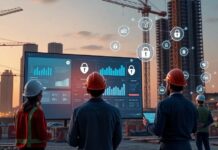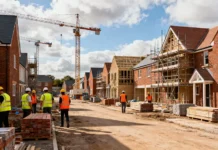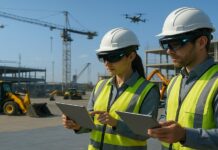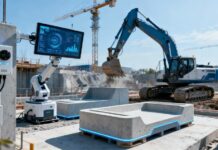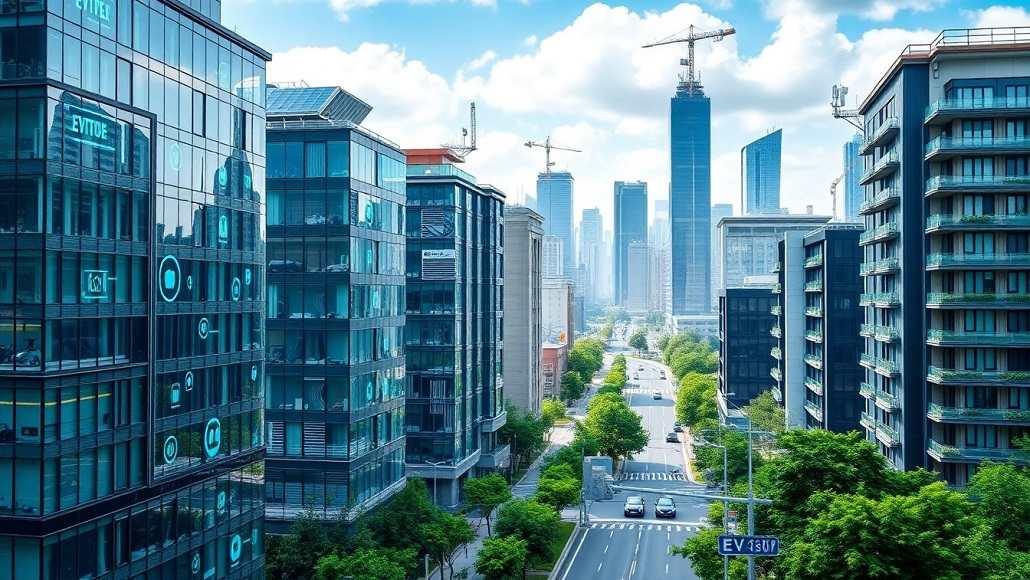In the relentless pursuit of sustainable urban development, cities worldwide face an array of complex challenges—from escalating energy consumption and rising carbon emissions to the need for efficient resource management. Navigating these challenges will increase the need for cities to leverage technology to create smarter, greener cities.
At the core of this transformation is Smart Building Management Systems (BMS). A technology that is now a necessity and not a luxury in creating a sustainable urban future. Smart Building Management Systems can enable cities to leverage resources to reduce environmental footprint and improve quality of life in the sustainable urban context.
The Evolution of Building Management Systems
Building Management Systems have traditionally been used to monitor and control various building functions such as heating, ventilation, air conditioning (HVAC), lighting, and security. However, most traditional systems were dependent on isolated operating systems with very limited integration, which produced poor energy efficiency and operational inefficiencies.
The emergence of digital technologies such as the Internet of Things (IoT), artificial intelligence (AI) and big data analytics have led to a re-examination of BMS, and smart systems that can make real-time decisions and can be viewed as dynamic. All of these systems have many sensor and networked devices that track and monitor environmental conditions, occupant habits, as well as equipment performance 24/7. The information is analysed to optimise building operations, predict maintenance requirements and interact with conditions with real-time decisions to not only allow for real-time decision making but engaging a pro-active approach to sustainability.
Switching to smart building management reflects the importance of smart technology integration in sustainable city ecosystem development. As cities are engaging with ambitious climate targets, implementation of state-of-the-art BMS will be vital to urban infrastructure.
The Role of Smart Building Management Systems in Sustainability
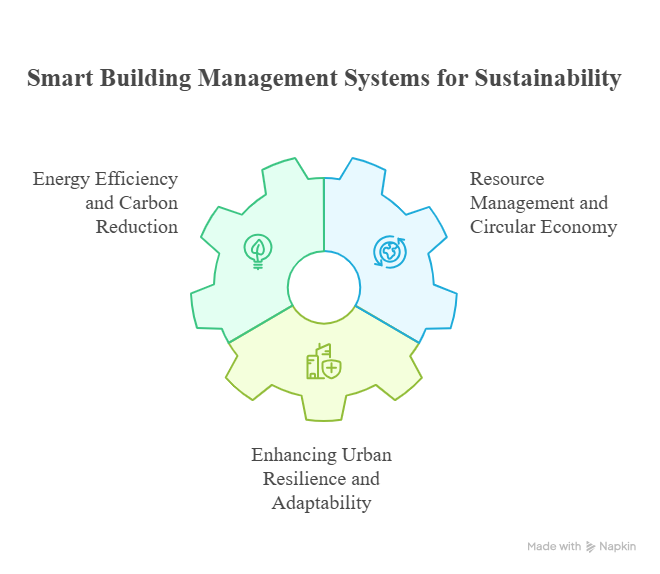
- Energy Efficiency and Carbon Reduction
One of the most compelling reasons for adopting smart BMS is their capacity to dramatically enhance energy efficiency. Buildings contribute a large percentage of global energy usage and greenhouse gas emissions and thus are a key lever for action on climate change.
Smart BMS utilise AI algorithms and data analytics to optimise HVAC, lighting, and other systems, avoiding wasteful energy consumption without impacting occupant comfort. For instance, occupancy sensors can modulate lighting and climate control according to real-time occupancy, which minimises waste. Advanced models can estimate energy usage trends, enabling early changes that correspond to renewable output in order to further reduce fossil fuel consumption.
The net impact of all of this optimisation is a massive reduction in the carbon footprint of a city. As governments boldly act on decarbonisation plans for cities, smart BMS will help achieve the affordable delivery of these plans.
- Resource Management and Circular Economy
Sustainable development of cities and communities is reliant on efficient resource management. Smart BMS facilitate this through providing a detailed account of what we know in terms of water, energy and waste networks. Monitoring of water consumption in real-time allows cities to detect leaks and inefficiencies, thus conserving it. In the same way, combined systems can control waste heat recovery or renewable power sources, promoting a circular use of resources.
Having smart BMS enables closed-loop system design minimising waste and maximising reuse—pillars of circular economy practice. These systems lessen both environmental footprints, while also reducing installation and lifecycle cost for owners and the city.
- Enhancing Urban Resilience and Adaptability
Climate change adds possible risk in the form of extreme weather events, heatwaves, and flooding, all threatening urban infrastructure. Smart BMS promotes resilience by offering early warning signs and adaptive controls that act on environmental threats.
For example, early identification of system anomalies avoids equipment failure, allowing continuous operation even under unfavorable conditions. Further, combining BMS with city-wide sensors and data networks enables smarter emergency response and resource allocation, critical for resilient urban ecosystems.
Technological Innovations Powering Smart Building Management
With the introduction of advanced technologies, the operational capability of smart BMS has dramatically widened to allow urban planners and facility managers to address sustainable actions with unprecedented precision.
- Internet of Things (IoT) and Edge Computing
At the heart of smart BMS are IoT sensors that monitor various data sources, including temperature sensors, occupancy sensors, humidity sensors, and energy meters. Edge computing processes data at the “edge”, or local level, giving near instantaneous feedback to support real-time decisions. This decentralisation of data processing and analytics provides some breathing room to make intelligent and informed decisions on energy usage while also considering the tenant’s comfort without being invasive to their experience.
- Artificial Intelligence and Machine Learning
AI-based analytics performs the work of turning unwieldy raw data into actionable intelligence. Machine learning engines notice patterns, track when major equipment failures will occur, and support real-time optimization of other operating parameters. These are critical decision tools when governing complex urban buildings with a diversity of functions, occupants, and occupancy practices.
- Big Data and Cloud Integration
Using big data provides not only a basis for real-time action and decision making based on current analytics but also allows for longer time frames to see trends displayed for trend analysis that will provide a basis for establishing patterns in long-term sustainability planning. Cloud computing allows for scale-out storage and access, allowing city managers to monitor multiple buildings and infrastructure systems from centralised consoles.
- Building Energy Modeling and Simulation
High-end simulation software enables testing of various operational and design scenarios, enabling planners to make informed decisions that ensure efficiency and sustainability prior to execution. The models replicate environmental impacts, energy consumption, and life cycle costs and help to enable sustainable urban development.
Market Drivers and Opportunities
The primary drivers include regulatory requirements for energy efficiency, rising energy and water costs, and a growing desire for occupant-driven environments that stimulate productivity and well-being. There are numerous opportunities in retrofitting buildings, new urban projects, and infrastructure development, where incorporating smart BMS can really push sustainability to higher levels.
The combination of renewable energy technologies, like wind and solar, with building systems produces hybrid solutions that maximize generation and utilisation, further propelling sustainability objectives.
Strategic Pathways for Urban Stakeholders
Having a strategic approach to smart building management systems (BMS) is beneficial for investors, facility managers, and urban planners. If urban BMS can be planned into cities from the beginning, the area can be optimised, measured, and managed for future applications of BMS modules. Developers may find that a strategic investment in talent and training in data analytics, cybersecurity, and software integration to receive the maximum return on investment from future smart building or smart building related technologies.
Meanwhile, collaborative monetized public-private partnerships can more easily create the required innovative BMS and associated solutions in the future, facilitated with government incentives and mechanisms to minimize the risk of adoption. The way forward can share knowledge and experience through existing pilot projects that lead to measurable reductions in energy consumption, increased resilience, and improved health for the end user.
Conclusion
Smart building management systems have transitioned a part of the previously unrealized vision into a crucial piece of urban sustainable development. This technology enables cities, through the deployment of new technology that will utilise resources more efficiently while reducing their environmental footprint and tolerating a more resilient future from the potential effects of climate stressors. It is critical business leaders and policymakers include smart BMS in planning assessments as part of urban development.
Moving forward involves modernizing the current issues with more innovative solutions, standardization, and collaboration. As more of the global population moves into urban environments, the role of intelligent BMS in creating sustainable, livable, and future-proof cities will, at least, evolve and grow steadily more important.











